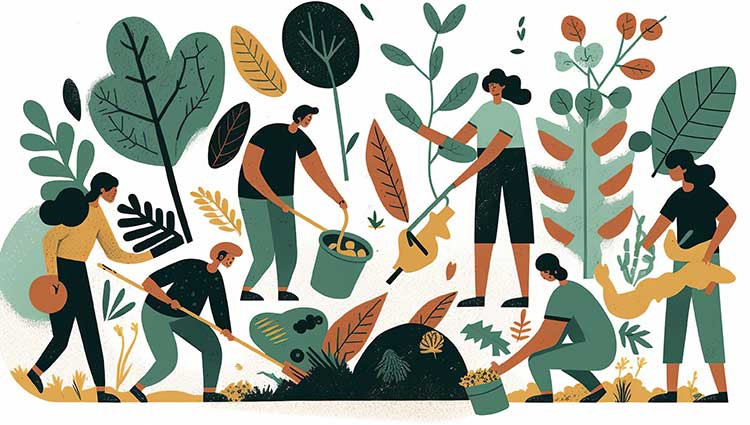A Call to Rediscover Its True Power Through Humility and Self-Awareness
The Problem
Many people think stewardship is simply about managing money well or being a good administrator. But true stewardship often falls short—not because of a lack of skill, but because of a lack of humility. When we think too highly of ourselves, we lose the heart of stewardship. It becomes transactional, not transformational.
This misunderstanding has consequences:
- Relationships with donors, clients, and communities remain surface-level.
- Our influence weakens.
- Opportunities for lasting impact slip through the cracks.
Stewardship is more than good management. It’s a mindset—a posture of the heart that fosters trust, engagement, and genuine care. If we want to steward people, resources, or influence well, we must begin with ourselves.
The Solution: Self-Stewardship Through Humility
True stewardship starts with self-stewardship, and self-stewardship starts with humility. Without humility, excellence in stewardship is impossible. The following list was originally shared by a visionary pastor on his blog. These 15 attributes of humility have helped shape how I think about self- stewardship:
- You are teachable.
- You are influenceable.
- You can be corrected without becoming defensive.
- You rejoice when others are celebrated.
- No job is too small for you.
- You don’t have to be right.
- You naturally seek the advice of others.
- You genuinely pray.
- You freely admit your flaws, mistakes, and failures.
- You live to help others succeed.
- You don’t feel entitled.
- You are patient.
- You don’t promote yourself.
- You let others share better stories than yours.
- You honor others when they speak.
How did you score?
Even the most experienced leaders benefit from revisiting these traits. I’ve seen firsthand how humility opens doors in both personal and professional relationships.
The CAP Perspective: Why Being Donor-Centric Matters
When I was earning my Chartered Advisor in Philanthropy (CAP) designation, one of the foundational principles we studied was the donor-centric model of engagement. This idea changed the way I viewed stewardship.
Rather than focusing on what the nonprofit wants to accomplish, the donor-centric approach shifts the focus to what the donor values. It asks:
- What are their passions and motivations?
- What legacy do they want to leave behind?
- How can we walk alongside them—not just ask something from them?
To be truly donor-centric requires humility, curiosity, and genuine care. It’s not about “getting the gift”—it’s about honoring the giver. That begins with us: how we listen, how we serve, and how we value people over transactions.
Real-Life Proof
Two of my friends exemplify this. They consistently walk in humility—and they are two of the most successful, donor-facing professionals I know. They are deeply trusted and highly valued, not because they chase the spotlight, but because they serve from the heart.
That said, humility alone doesn’t guarantee success. Some humble individuals struggle due to other factors—juggling too many roles, lack of communication training, or being in environments where their gifts aren’t well aligned. But humility is still the foundation.
Why Stewardship Matters More Than Ever
Let’s pause for a quick history lesson. The English word “stewardship” comes from the Old English words “sti” (meaning pigsty or household) and “ward” (guardian or overseer). Pigs, unlike cows or goats, couldn’t be left alone for days. They needed constant care. The word “ward” doesn’t imply ownership—it implies responsibility.
That’s the key: stewardship isn’t about control. It’s about care without ownership. It’s all God’s anyway: “The earth is the Lord’s, and everything in it.” – Psalm 24:1
The Bible doesn’t use the word “stewardship”, but the principle is everywhere. Joseph stored grain during seven years of plenty for seven years of famine. He didn’t just manage — he prepared, protected, and cared.
Practical Next Steps: Grow, Ask, Listen
So what now?
Once we’ve committed to humility, we build on it. We:
- Grow in skill and wisdom.
- Educate ourselves.
- Guard our hearts and minds.
- Ask better questions to connect more deeply with others. Start with questions like:
“Tell me more about that?” “How did that make you feel?”
“That’s interesting—what was your motivation?”
“If money were no object, what activity would you do more of—and why?”
Practice asking these with a friend or co-worker. Role-play. Build confidence. And most importantly—listen. Deep, intentional listening is often the missing ingredient in effective stewardship—and it takes time. Be present, be patient, and make space for meaningful connection.
The Human Factor in Giving
Here’s something you already know, but may not often think about:
People give because of who asks them. Relationships matter. A staff transition can cause a donor to disappear. A final estate gift may go elsewhere simply because someone else stewarded that relationship better.
In my own experience as a Registered Investment Advisor since 1986, I’ve seen how asking the right questions can open doors—often more than expertise alone. It’s not just about what clients have; it’s about what they hope, fear, and value.
And many people want to go deeper. They want to talk about their childhood, their purpose, their faith. I’ve asked clients if they plan to tithe from their estate—many haven’t, but they’re open to including charitable giving when we talk about it.
I even hired a transition coach and corporate chaplain and made them available to clients. That decision has led to some of the richest, most meaningful conversations of my life—including hospital visits where people opened up about mortality, love, legacy, and faith.
Final Thought: Love Is the Foundation
If you take one thing from this, let it be this:
-
- Stewardship isn’t about money—it’s about love.
- Let go of selfish ambition. Grow deeper in humility.
- Be curious. Ask better questions.
- And serve others with compassion, not control.
Because the “phil” in philanthropy means love.







